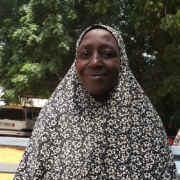Saving Mother’s Lives: HC3 Pilots I-Kit in Niger and Togo to Address High-Risk Pregnancies
Advanced maternal age (AMA) and high-parity (HP) pregnancy — two pregnancy categories rarely addressed or discussed in Sub-Saharan Africa — are addressed head-on in the Healthy Timing and Spacing of Pregnancy Implementation Kit (HTSP I-Kit) which launched Mother’s Day 2016. My blog that day specifically noted the tool’s potential to save lives by informing women about the dangers of AMA and HP pregnancies.
This Mother’s Day, we come full circle to share how this I-Kit was used in two West African nations: Niger and Togo.
In 2016, the Health Communication Capacity Collaborative (HC3) selected Marie Stopes International (MSI) in Niger and the Association Togolaise pour le Bien-Être Familial (ATBEF) in Togo from a pool of applicants to pilot the I-Kit in their existing project work. Each organization selected specific I-Kit elements (detailed in the table below) according to need, and which would best complement their existing activities. HC3 provided modest financial support, as well as technical assistance on-site and through phone, email and Skype sessions.
HTSP I-Kit tools used by each organization:
| MSI-Niger | ATBEF |
| Implementation manual for program managers | Implementation manual for program managers |
| Client brochure for more conservative audiences | Client brochure for less conservative audiences |
| Counseling and assessment guide for providers | Counseling and assessment guide for providers |
| Counseling and assessment guide for community health workers | Counseling and assessment guide for community health workers |
| Reminder poster for facility-based providers | Reminder poster for facility-based providers |
| Journalist guide | Infographics for policy and decision-makers |
Overall, MSI reached a total of 12,757 women and men with AMA and HP pregnancy risk information through counseling and community sensitization activities. A workshop with eight journalists also proved fruitful and yielded one television and one radio piece about MSI’s AMA/HP activities. Further, MSI staff said because of the I-Kit, they now integrate AMA and HP information into their daily client outreach, and are able to better tailor their client-centered counseling for at-risk women.
In Togo, results were also encouraging. ATBEF included Ministry of Health officials in project coordination activities, and reached over 3,300 women and men with AMA and HP information through counseling and community-based activities. Because of the I-Kit, ATBEF’s community health workers now include AMA and HP pregnancy in their rotating schedule of community health education topics. ATBEF staff found talking about these high-risk pregnancies often encouraged women to share their own experiences with difficult pregnancy and births, realizing for the first time that age and parity might have contributed to these experiences.
While the case studies outline these successes, they also include valuable lessons learned and ideas for adapting the I-Kit. For example, group and community-based counseling figure prominently into both MSI-Niger’s and ATBEF’s portfolio. While some I-Kit materials – such as the brochure, infographics and provider counseling guides – are best suited for individual consultations, each organization creatively used these for large group sessions. Secondly, as literacy varies between communities, some contexts would benefit from more image-based materials. MSI-Niger and ATBEF each thought a flip chart in particular would be useful. HC3’s Nigeria family planning team recently finalized such a resource for its healthy timing and spacing of pregnancy (HTSP) community mobilization activities.
 The flip charts (available with English and Hausa translation) draw from the AMA and HP I-Kit’s HTSP key messages, and serve as the I-Kit’s perfect complement. While the flip charts do not focus on AMA and HP pregnancies specifically, such information could easily be folded into sessions using the resources.
The flip charts (available with English and Hausa translation) draw from the AMA and HP I-Kit’s HTSP key messages, and serve as the I-Kit’s perfect complement. While the flip charts do not focus on AMA and HP pregnancies specifically, such information could easily be folded into sessions using the resources.
Read the full Niger and Togo case studies here, and don’t forget the I-Kit as a whole is intended to be adapted for your use! Learn more about how to get the editable I-Kit material files here, or contact me, (erin.portillo@jhu.edu) with questions or for more information.









Leave a Reply
Want to join the discussion?Feel free to contribute!